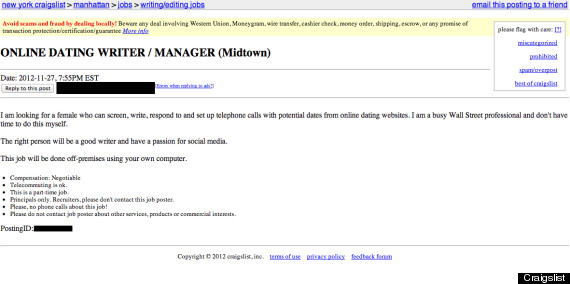The macro session was followed by an engaging and thought-provoking panel featuring four long-established hedge fund CEOs and business-managers, who came together to debate the big challenges facing the industry in a turbulent, fast-changing and unpredictable world.
The panel comprised Barry Goodman of US-based systematic trading firm Millburn Ridgefield Corporation, Jonathan Lourie of
Cheyne Capital Management, Manny Roman of Man GLG and Sir Paul Ruddock of Lansdowne Partners.
Taking in barriers to entry, investor requirements and increased regulation among other issues, the session covered a broad range of topics representing some of the most pressing concerns for individual hedge fund firms, the executives that manage them and the industry at large.
As moderator, KPMG’s Robert Mirsky began by noting that 2011 was a less than perfect year for hedge funds, and asked whether 2012 would be a make-or-break year for the industry: as he put it, “a time to put up or shutup”.
The current challenging market conditions may mean that newer managers are tempted to retro-fit their investment styles to suit the environment, suggested Goodman. “You have to stick to your knitting, and not change what you do,” he urged, adding that “markets won’t stay like this forever”.
Roman went further, arguing that this was “a great time to be investing”. “Last year was not good, but we made more in the first four months of this year than we lost in the whole of last year - which shows there are plenty of opportunities out there,” he said.
Lourie agreed, and said that market opportunities generally increase after a bad spell. “It was a poor cycle that led to a bit of negativity, but that’s exactly the time to be investing,” he said.
Industry growth has created its own challenges, said Ruddock, pointing out that the hedge fund industry has expanded to a point where it now manages around $2 trillion - roughly four times more than a decade ago.
Trades are now more crowded, and there are more managers competing for assets from investors; amid these pressures, hedge funds must continue to perform if they are to carry on charging premium fees, he explained.
“Performance in the early years is key for setting up a successful business,” Ruddock continued. “Critical mass has gone up, and compliance and regulatory demands have gone up too.” Recalling that he co-founded Lansdowne around 12 years ago with $50 million, Ruddock said that barriers to entry have been raised substantially. “I think that starting with under $200 million today is very difficult; starting with $50 million today I think is a struggle,” he said.
Goodman backed Ruddock’s assertions with an example from his own experience. “People who had produced decent performance are coming to us and wanting to join our research department because they don’t have the infrastructure and experience to run their own firms,” he said.
“I think you have to pick the right segment if you want to thrive as a start-up,” said Roman, adding that he believes that emerging markets and the US technology sector offer some of the strongest investment opportunities at present.
Investor satisfaction is another significant challenge, and one that is most put to the test after a tough period.
“Difficult years are very hard for high-net-worths,” said Ruddock of a traditional source of hedge fund assets. “Unless they’re very rich and very sophisticated, the money they have has generally been built up through hard work,” he observed. “If they lose 10% they get very upset - the fact that the market might have been down 20% is kind of irrelevant.”
“I think high-net-worths will come back into hedge funds,” said Cheyne Capital founder Lourie, who was generally one of the more optimistic panellists. “The institutional tickets are more substantial, but I think that family offices and individuals are still very important to our industry.”
Post-2008, investors have been extremely wary about signing up to longer lock-up periods, which means that some attractive, longer-term investment opportunities are being missed by hedge funds, said Roman.
“In this environment, investors want performance but they also expect access, so you need both,” Goodman said. “There’s a tremendous demand for greater transparency, for weekly reporting. That was never even a thought 10 years ago.”
“If you have a global business, different investors will want different things,” Roman noted, adding that it is important not to compromise the fund’s liquidity profile or lose focus on performance in an attempt to satisfy the whims of each investor. “Listen to what people want, and then make sure that what they want makes sense,” he advised.
Unsurprisingly, the increasingly burdensome nature of new regulations being imposed on the hedge fund industry was highlighted as a major concern. “The regulatory changes and additions are vast - it’s a sea change,” said Ruddock. Highlighting the Alternative Investment Fund Managers Directive, he observed that the final rules “seem to have ignored a lot of the advice”.
Ruddock added: “Some of these regulations are completely impractical. We can deal with it, but it’s costly.
Ultimately a lot of the cost is borne by the investors - and it’s not clear to me that this is protective of investors at all.” Goodman called for more interaction between hedge fund managers and those drafting the regulations that will ultimately affect their businesses.
Despite the various concerns addressed during the session, Lourie ended on a positive note. Anticipating high volatility in equities and a bear market in fixed income, he said he could think of no better vehicle than a hedge fund to exploit such market conditions. “I think we’re entering a golden age for the hedge fund industry,” he commented.

